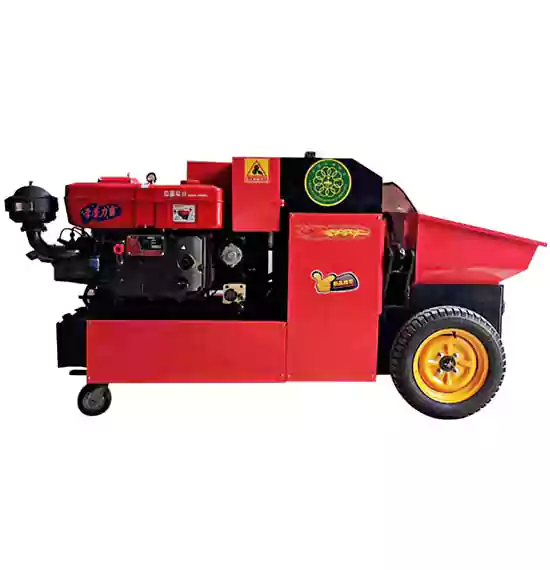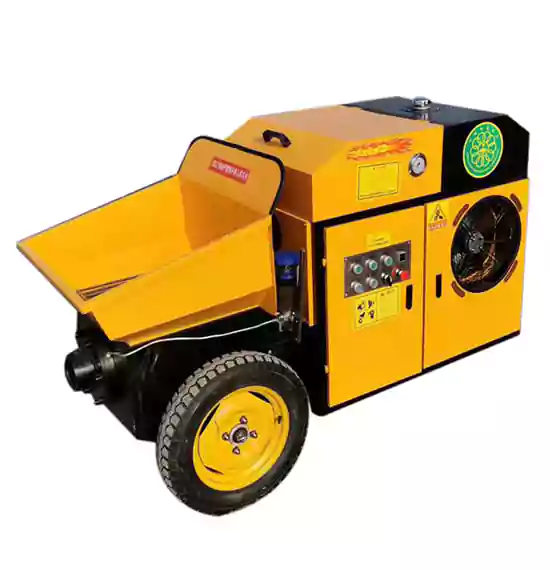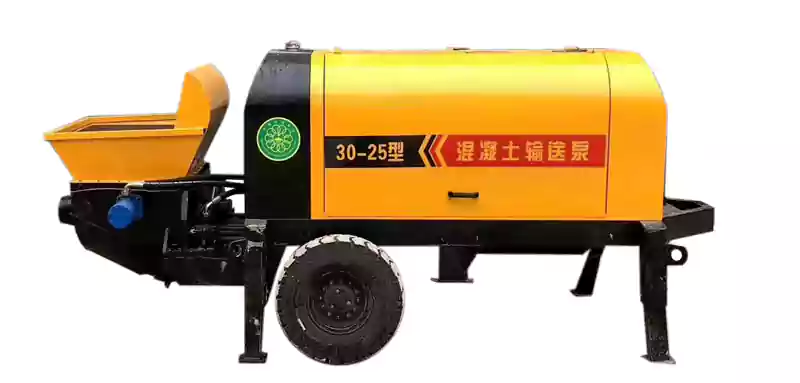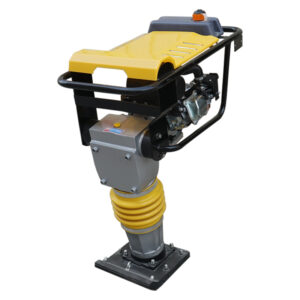Specification for use of concrete pump
(1) The towed concrete pump can be towed by motor vehicles, but shall not carry any cargo, and the towing speed shall not exceed 8km/h;
(2) The pressure of each safety valve of the hydraulic system of the concrete pump should meet the requirements of the manual, and the user shall not adjust or change it;
(3) Antifreeze measures should be taken for the construction of concrete pumps in cold seasons;
(4) During construction in hot seasons, the concrete pump should prevent the oil temperature from being too high. When the temperature reaches 70℃, stop the operation or take other measures to cool down;

(5) After pumping concrete, clean the hopper, S valve, concrete cylinder and conveying pipeline in time. After the pump is cleaned, the pressure of the accumulator should be released, the power supply should be cut off, and the switches should be in the stop or disconnected position;
(6) Staff are not allowed to climb or ride on the pipeline, especially when working at heights;
(7) Before the concrete is pumped and cleaned, it is necessary to reverse the pump for several strokes to reduce the pressure in the conveying pipe and avoid accidents;
(8) Safety and accident prevention devices should be installed on the construction site. Such as: indicating and warning signs, fences, metal baffles, etc., set up a necessary working area (not less than 1 meter) around the pump, and non-operators are not allowed to enter without permission. Regularly replace the conveying pipeline within three meters from the operator, which must be fastened and screened with wooden boards or metal partitions;

(9) It is strictly forbidden to operate when the reading of the vacuum gauge is greater than 0.04Mpa, otherwise the main oil pump may be damaged;
(10) The use, installation and wiring of the electrical control box must be carried out by professionals;
(11) The concrete in the concrete delivery pump hopper must be higher than the mixing shaft to avoid concrete splashing due to inhalation of air;
(12) When the pumping operation is over, when the pump is transferred to retract the outriggers, first retract the rear outriggers, put down the ground rollers, and then retract the front outriggers;
(13) The operator (the pump worker of the concrete delivery pump) shall record the working conditions of the concrete pump as required.
(14) The concrete pump should be firmly fixed before use, and the four feet should be raised to make the tire off the ground, or the tire should be removed. Check the support of the hopper and chute on the upper part of the pump to ensure stability and reliability. Special attention should be paid to the overturning of the pump and causing casualties!
(15) When pumping, pay attention to splashing concrete or other objects entering the eyes, causing eye injury!
(16) The power supply wiring of the concrete pump must have a leakage protection switch. It is necessary to check whether the original electrical components work normally and whether the cables are damaged to prevent casualties caused by electric shock!

(17) It is necessary to ensure the reliable connection of the conveying pipeline, regular maintenance, and prevent the personnel from being injured due to pipe jams, pipe bursts or blockages!
(18) It is strictly forbidden to open hydraulic pipe joints or loosen hydraulic flange bolts when the hydraulic system is not unloaded. High-pressure hydraulic oil injection can cause great damage!
(19) When the pump is working, it is strictly forbidden to reach into the area with moving parts such as the hopper, water tank, reversing cylinder, etc., and stop the operation when it needs to be checked!


